In the vast agricultural landscape of Brazil, sugarcane Farming emerges as a pivotal sector. This exploration delves into diverse varieties, cultivation practices, production costs, and the intricate balance of profits. Unravel the complexities of this thriving industry in the heart of South America.
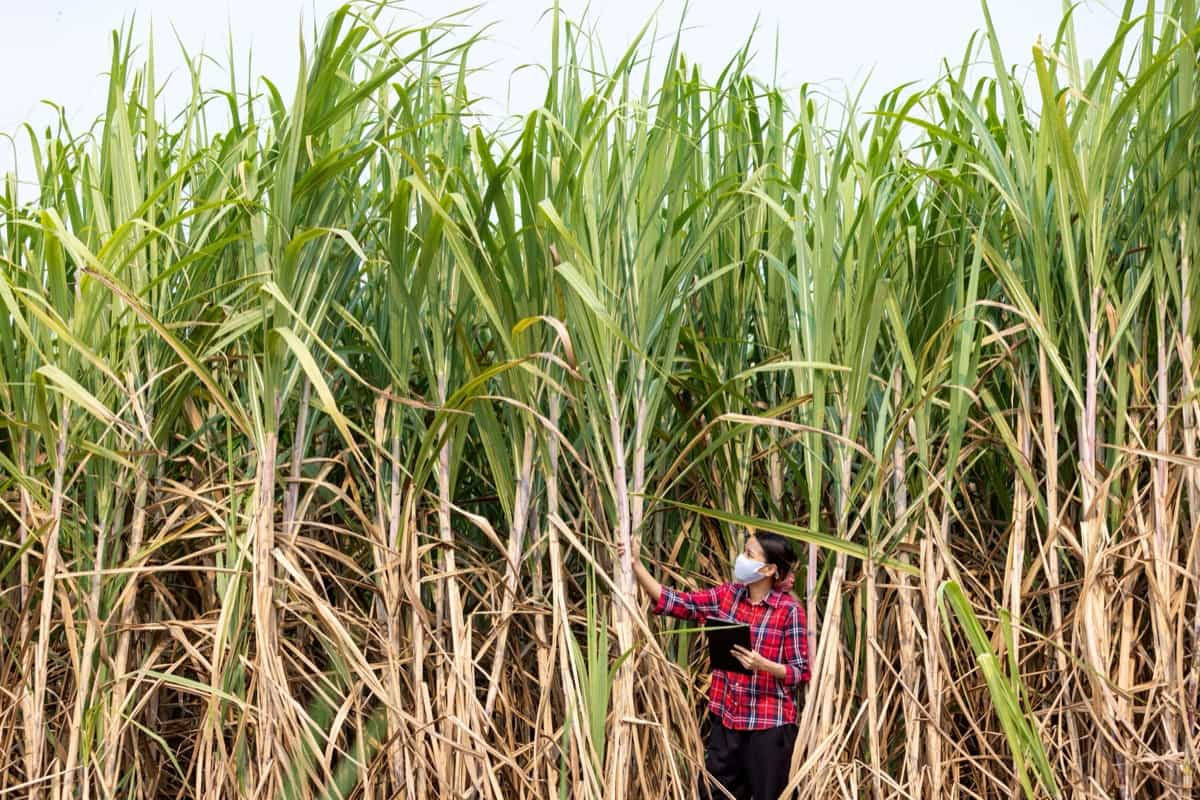
Introduction to Sugarcane Farming in Brazil
Sugarcane is a semi-perennial crop that can be harvested multiple times in tropical and subtropical areas. It is an important source of sugar and ethanol, which are used for food and fuel. Brazil is the world’s top producer of sugarcane, accounting for about 25% of the global production.
Sugarcane cultivation in Brazil has a long history, dating back to the 16th century. It has also undergone significant technological and environmental changes over time. Today, sugarcane farming in Brazil covers about 10 million hectares of land, mainly in the south-central and northeast regions. Sugarcane farming in Brazil faces various challenges and opportunities, such as global warming, market demand, land use, and innovation.
Historical Overview of Sugarcane Farming
Sugarcane is one of the most important crops in Brazil, as it is the main source of sugar and ethanol, which are widely used for food and energy purposes. Sugarcane was introduced in Brazil by the Portuguese colonizers in the 16th century, who established large plantations with irrigation systems and slave labor. Sugarcane became the basis of the colonial economy and a major export commodity. In the 18th century, however, sugarcane production declined due to competition from other regions and internal conflicts.
In the 20th century, sugarcane regained its importance with the development of new varieties, breeding programs, mechanization, and biotechnology. Today, Brazil is the world’s largest producer of sugarcane, with an annual output of over 600 million tons. Sugarcane farming in Brazil faces several challenges, such as land use change, soil compaction, water consumption, and greenhouse gas emissions, but it also offers opportunities for sustainability and innovation.
Varieties of Sugarcane Grown in Brazil
Brazil is the world’s leading producer of sugarcane, a crop that has multiple uses and benefits. Sugarcane can be used to produce ethanol, a renewable fuel that reduces greenhouse gas emissions, sugar, a sweetener that is widely consumed; and cachaça, a popular alcoholic beverage. Sugarcane cultivation in Brazil has evolved over the years thanks to the development of new varieties and cultural practices.
In case you missed it: How to Start Organic Farming in Brazil: Business Plan, Key Rules, Cost, Schemes, Loans, and Certification
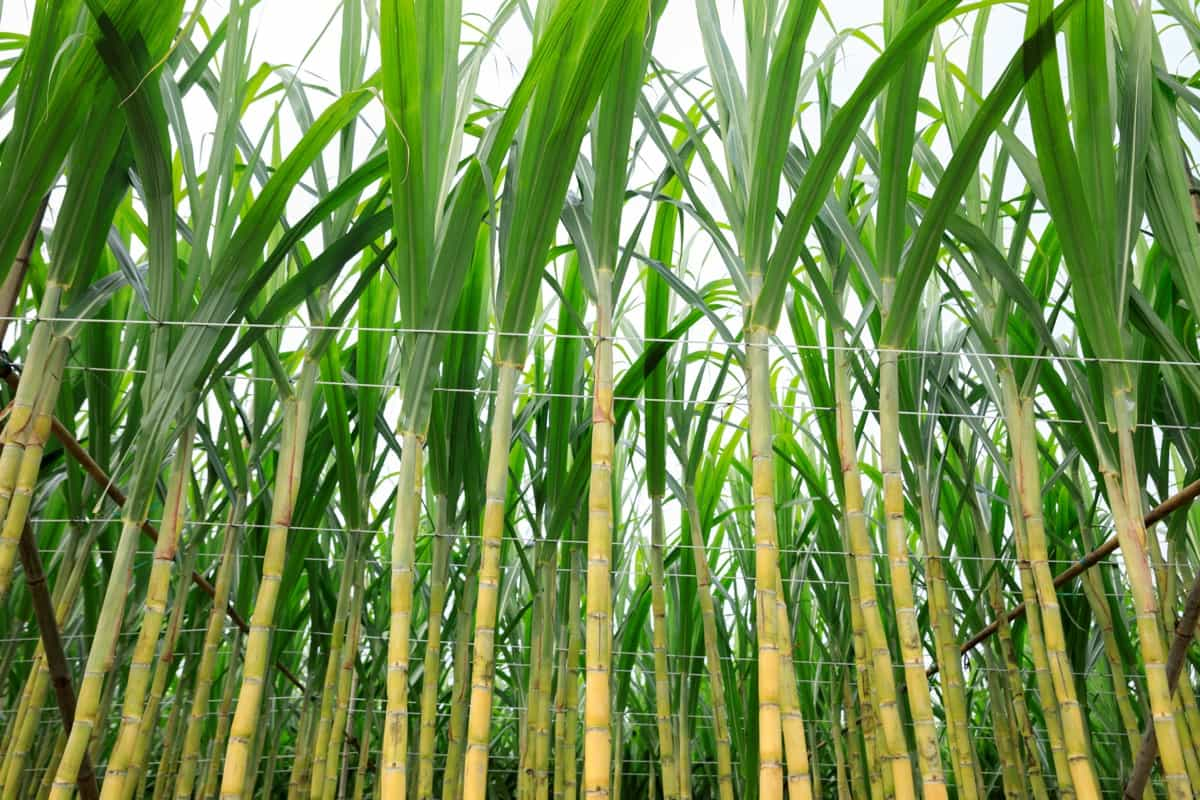
Some of the varieties of sugarcane grown in Brazil are CTC9003BT, CTC9001BT, CTC7515BT, and CTC20BT. These are genetically modified varieties that contain Bacillus Thuringiensis (or BT), which makes them resistant to the cane borer, a major pest. These varieties can be used to produce sugar and ethanol. SP80-1842, SP80-1816, RB855536, and RB867515: These are conventional varieties that have high productivity and sucrose content. They are suitable for different soil and climate conditions in Brazil.
Cultivation and Planting Techniques
Planting: Sugarcane cultivation in Brazil involves two primary methods – seeds for breeding new varieties and cuttings for commercial production. Cuttings, comprised of stalks with buds, are planted in furrows or ridges, typically between September and March in the south-central region and January to April in the northeast.
Fertilization: Sugarcane’s nutrient demands for optimal growth and yield necessitate strategic fertilization. Application occurs before planting, during growth, and pre-harvest, with amounts and types tailored to soil fertility, crop rotation, and variety. Crucial elements include nitrogen, phosphorus, potassium, calcium, magnesium, sulfur, and micronutrients.
Irrigation: Being water-intensive, sugarcane relies on consistent moisture, supplementing rainfall through varied irrigation methods – surface (furrow or flood) or pressurized (sprinkler or drip). While enhancing yield and quality, irrigation demands additional energy and water resources.
In case you missed it: How to Start Pig Farming in Brazil: Business Plan, Cost, Profits, Breeds, Care, and Management
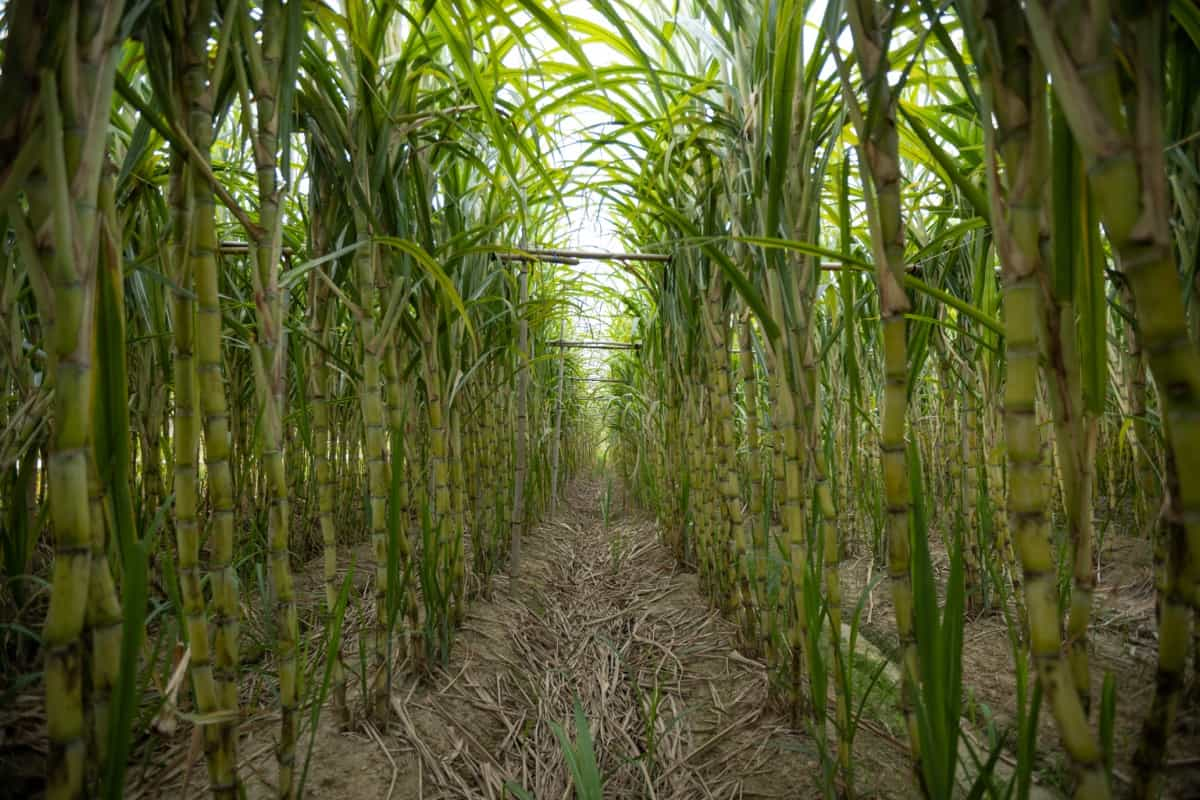
Weed Control: Weed interference threatens sugarcane productivity, prompting manual, mechanical, chemical, or biological control methods. Techniques range from hoeing and hand-weeding to mowing, cultivating, herbicide application, and employing natural enemies or cover crops.
Pest and Disease Control: Sugarcane faces threats from pests like borers and aphids and diseases such as smut and rust. Control strategies involve resistant varieties, cultural practices, biological control, or chemical interventions.
Harvesting: Harvesting methods – manual or mechanical – present trade-offs. Manual cutting preserves sugar content and supports multiple ratoons but demands more labor. Mechanical harvesting is efficient but causes soil and ratoon damage, with increased losses.
Sugarcane Yield Per Hectare in Brazil
Sugarcane is one of the most important crops in Brazil, as it is the main source of sugar and ethanol production. The country is the world’s largest producer and exporter of sugarcane. The yield of sugarcane per hectare in Brazil has been increasing over the years, thanks to the continuous improvement of cultivars by breeding programs.
The yield of sugarcane in Brazil has been increasing over the years, reaching an average of 76.13 metric tons per hectare. According to some sources, the yield of sugarcane in Brazil will reach 75.8 metric tons per hectare planted in 2024, which is 2.9 percent higher than the previous year. The area planted with sugarcane in Brazil is also expected to grow to 8.4 million hectares by 2024.
Sugarcane-Grown Areas in Brazil
| State | Harvested Area (ha) |
| São Paulo | 5,308,000 |
| Goiás | 1,015,000 |
| Minas Gerais | 977,000 |
| Mato Grosso do Sul | 728,000 |
| Paraná | 653,000 |
| Mato Grosso | 296,000 |
| Bahia | 77,000 |
| Rio de Janeiro | 57,000 |
| Espírito Santo | 53,000 |
Brazilian Sugarcane Statistics
Brazil is the world’s largest producer and exporter of sugarcane, a crop that plays a vital role in the country’s economy and energy matrix. According to the latest forecasts, Brazil is expected to produce 637 million metric tons of sugarcane in the crop year 2023/2024, an increase of 10.6% compared to the previous year. The area planted with sugarcane is projected to reach 8.4 million hectares, a growth of 1.5 percent. The average yield of sugarcane is estimated at 75.8 metric tons per hectare, a rise of 2.9 percent.
The main sugarcane-producing region in Brazil is the Center-South, which comprises the states of São Paulo, Minas Gerais, Goiás, Mato Grosso, Mato Grosso do Sul, Paraná, Rio de Janeiro, and Espírito Santo. This region accounts for about 90 percent of the national production and is expected to harvest 590 million metric tons of sugarcane in 2023/24, an increase of 11.7 percent compared to 2022/23. The state of São Paulo alone is responsible for nearly half of the Center-South production, with an output of 283 million metric tons.
The main products derived from sugarcane are sugar and ethanol, which are used for domestic consumption and export. Brazil is expected to produce 41 million metric tons of sugar in 2023/24, an increase of 6% compared to the previous year. The sugar exportable surplus is projected at 32.5 million metric tons, a growth of 7.7 percent. The United States is one of the main destinations for Brazilian sugar exports, with an allocated quota of 156 thousand metric tons for fiscal year 2024.
In case you missed it: How to Start Hydroponic Farming in Brazil: Business Plan, Crops, Subsidy, and Requirements
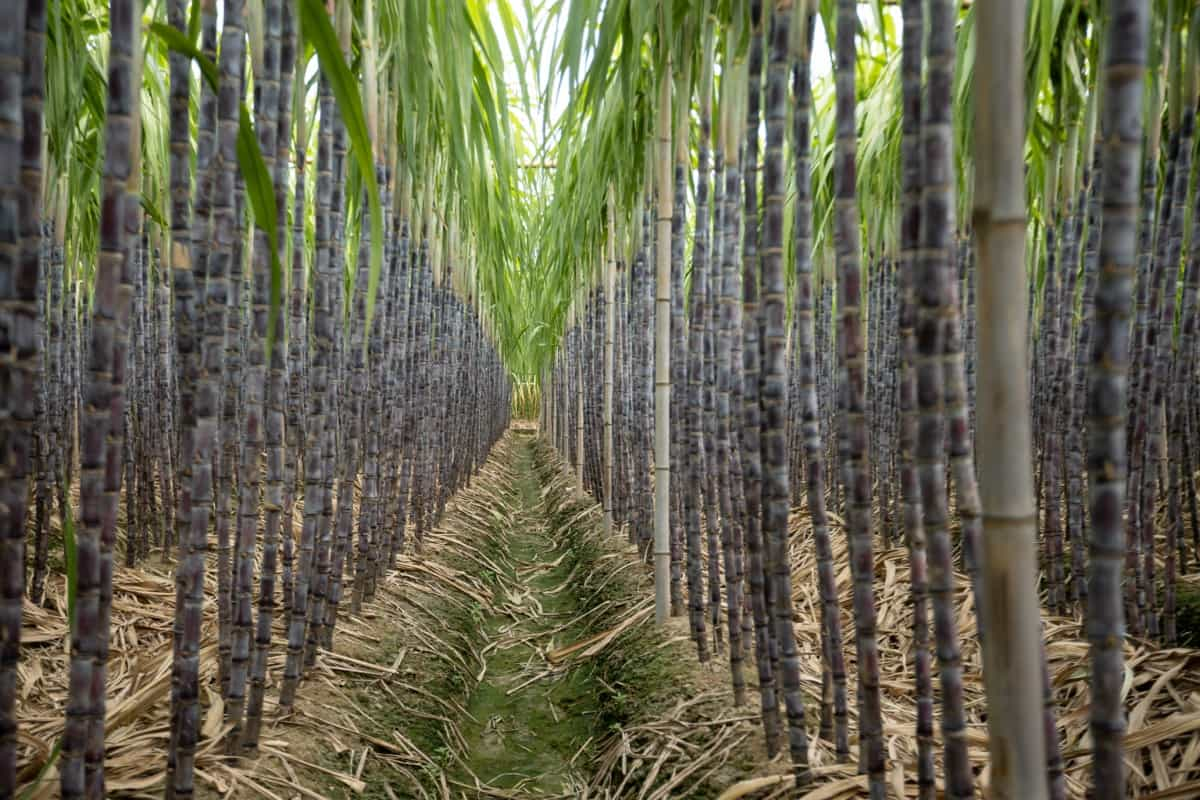
Ethanol production from sugarcane is forecasted to be at 26.5 billion liters in 2023/24, a slight decrease of 0.1 percent compared to 2022/23. Ethanol is used as a fuel for vehicles in Brazil, either as pure ethanol (E100) or blended with gasoline (E27). Ethanol exports are expected to reach 2 billion liters in 2023/24, a decline of 9.1 percent compared to the previous year.
Production Cost Analysis
A production cost analysis for Brazilian sugarcane farming can be divided into two stages: pre-harvest and post-harvest. Pre-harvest costs include land preparation, planting, fertilization, pest and disease control, irrigation, and harvesting. Post-harvest costs include transportation, milling, processing, and marketing. According to some studies, the average pre-harvest cost of sugarcane in Brazil was R$57.8 per ton, while the average post-harvest cost was R$23.6 per ton.
The total production cost was R$ 81.4 per ton, which was lower than the average revenue of R$ 89.6 per ton. However, the production cost and revenue of sugarcane vary significantly across regions and seasons. For example, the pre-harvest cost of sugarcane in the Northeast region was R$ 75.9 per ton, while in the Center-South region, it was R$ 54.2 per ton.
The post-harvest cost also differed by R$ 7.4 per ton between the two regions. Moreover, the production cost and revenue of sugarcane depend on the harvest method (manual or mechanized), the crop cycle (plant cane or ratoon cane), the quality of the cane (sucrose content and purity), and the market prices of ethanol and sugar.
Profitability Analysis
Sugarcane is a semi-perennial crop that can be harvested multiple times throughout several years, depending on the climatic conditions and the management practices. To analyze the profitability of sugarcane cultivation in Brazil, we need to consider the costs and revenues associated with this activity. The costs include the expenses for land preparation, planting, fertilization, irrigation, pest and disease control, harvesting, transportation, and processing.
The revenues include the income from selling sugar and ethanol, as well as by-products such as bagasse, molasses, and electricity. The profitability of sugarcane cultivation in Brazil depends on several factors, such as the market prices of sugar and ethanol, the productivity of sugarcane per hectare, the efficiency of the processing industry, and the environmental and social impacts of this activity. According to a study, the average yield of sugarcane in Brazil was 80.6 tons per hectare.
In case you missed it: How to Start Sheep Farming in Brazil: Breeds, Business Plan, Challenges, and Management
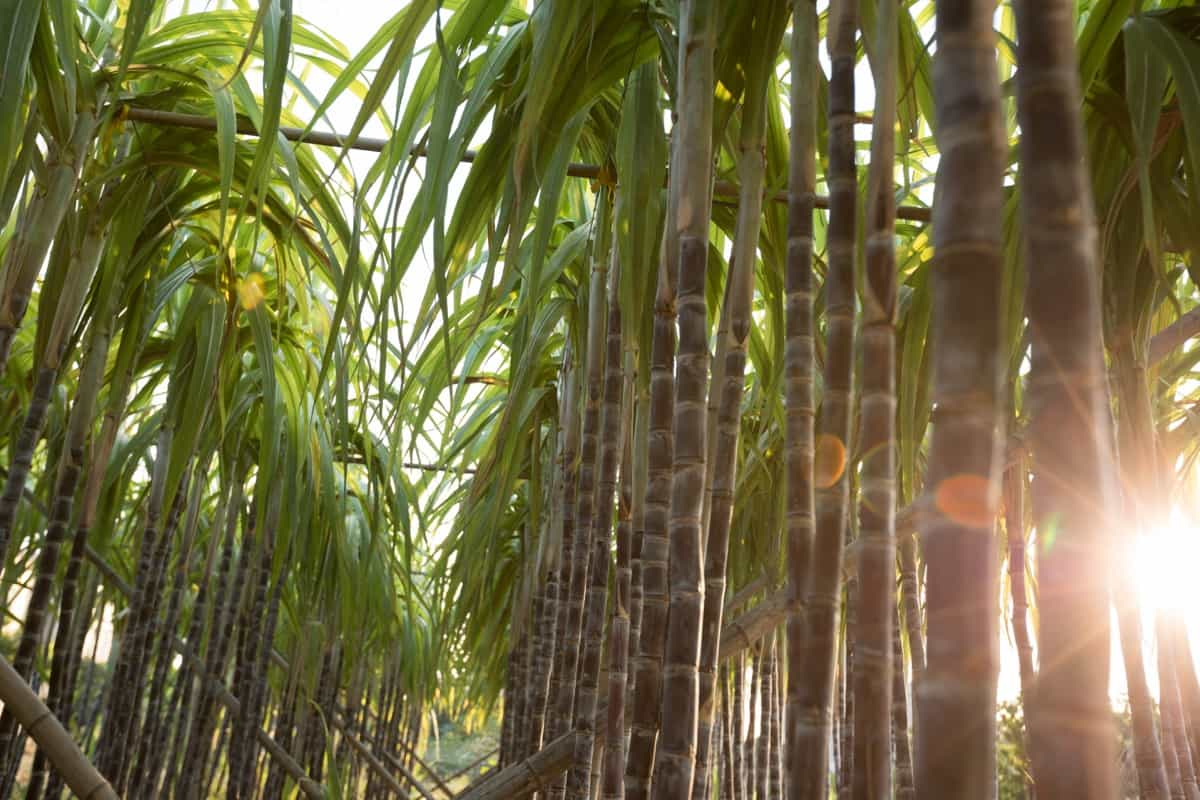
Assuming an average price of $0.12 per kg of sugar and $0.45 per liter of ethanol, the gross revenue from sugarcane cultivation in Brazil can be estimated at $1,936 per hectare. However, this needs to account for the costs involved in this activity, which can vary widely depending on the region, the technology level, and the scale of production. According to a report, the average cost of sugarcane production in Brazil was $0.11 per kg of sugar. This means that the net revenue from sugarcane cultivation in Brazil can be estimated as $0.01 per kg of sugar equivalent or $80 per hectare.
Technological Innovations in Brazilian Sugarcane Farming
To increase the productivity and sustainability of sugarcane farming, Brazilian researchers and farmers have been developing and implementing various technological innovations. Some of these innovations include.
- Precision agriculture: uses sensors, drones, satellites, and geographic information systems to monitor and optimize the use of water, fertilizers, pesticides, and soil quality.
- Genetic improvement: breeding new varieties of sugarcane that are more resistant to biotic and abiotic, and salinity, as well as more efficient in photosynthesis and biomass production.
- Biotechnology: applying techniques such as genetic engineering, tissue culture, and molecular markers to create transgenic sugarcane plants with enhanced traits or novel characteristics.
- Bioenergy: converting sugarcane biomass into electricity, biogas, biofuels, and bioproducts, such as bioplastics and biochemicals.
Environmental Sustainability in Sugarcane Farming
Sugarcane farming faces challenges regarding its environmental sustainability, such as land use change, soil compaction, water consumption, and nutrient management. In the last decade, several advances have been made to improve the sustainability of sugarcane production in Brazil based on research, innovation, and public policies. Some of these advances include
- The adoption of non-burning harvesting practices, which preserve the soil’s organic matter, reduce air pollution and increase biodiversity.
- The revision of fertilizer recommendations, which optimize the use of nutrients and organic residues, such as vinasse and filter cake, enhances soil fertility and productivity.
- The development and release of new sugarcane varieties, including transgenic ones, which have higher yields, resistance to biotic stress, and adaptation to different soil and climate conditions.
- Novel planting methods, such as pre-sprouted settlings and MEIOSI, which reduce planting costs, increase ratoon longevity and allow crop rotation with other species, were introduced.
- The implementation of controlled traffic farming minimizes soil compaction and ratoon damage caused by heavy machinery.
- Compliance with Renovabio is a national biofuel policy that incentivizes the production of low-carbon ethanol and rewards producers who adopt sustainable practices.
Brazilian Government Policies and Support for Sugarcane Farmers
Rural Credit Support: Brazil’s government aids sugarcane farmers through concessional loans, courtesy of the 2020 Agro Law. This legislation introduces innovative financial mechanisms to bolster rural credit, catering to needs ranging from working capital to marketing and investments.
Climate-Resilient Farming: To shield sugarcane farmers from climate risks, the government subsidizes crop insurance premiums. The National Agricultural Zoning Programme for Climate Risk (ZARC) plays a pivotal role, determining optimal planting periods based on weather data and crop models.
Innovation and Research Focus: Government investments in research and innovation drive enhancements in sugarcane productivity, quality, and resilience. This commitment extends to promoting best practices and technologies for soil conservation, residue recycling, and biodiversity preservation.
Tax Incentives for Growth: Sugarcane farmers and ethanol producers benefit from governmental tax incentives. These include lower tax rates, exemption of pension taxes, and special interest rates on tax liabilities, collectively fostering growth in the sector.
Ethanol Mandates and Decarbonization Credits: The government reinforces the use of ethanol in the transport sector, ensuring a stable demand for sugarcane-based biofuel. The 2018 Renovabio legislation further incentivizes ethanol producers with low carbon intensity through decarbonization credits.
In case you missed it: How to Start Greenhouse Farming in Brazil: Steps, Cost, Crops, Benefits, and Challenges
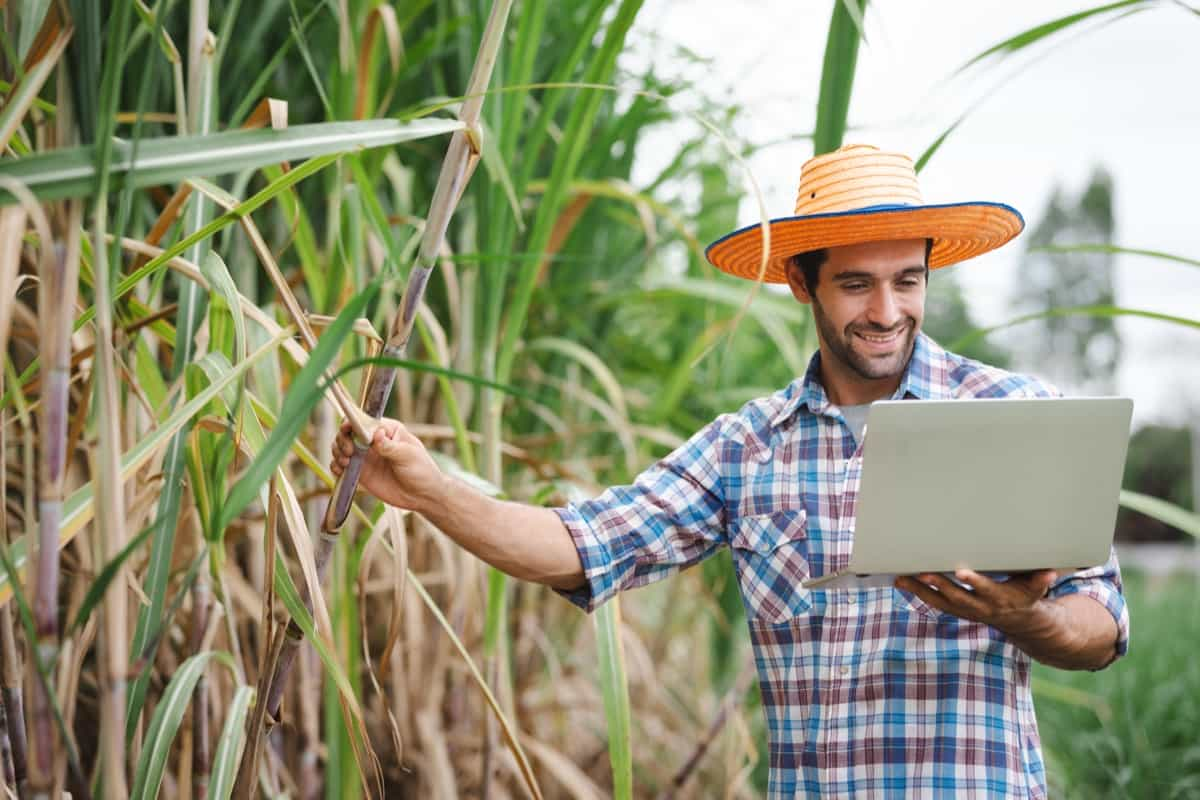
Conclusion
Sugarcane farming in Brazil is a mix of old traditions, new technology, caring for the environment, and help from the government. Brazil is the top producer of sugarcane worldwide, showing how they use sustainable and smart ways to grow this important crop. It’s a great example of how farming can be both modern and good for the environment.
- Types of Pesticides Used in Agriculture: A Beginner’s Guide
- Economical Aquaculture: A Guide to Low-Budget Fish Farming
- 15 Common Planting Errors That Can Doom Your Fruit Trees
- How to Make Houseplants Bushy: Effective Tips and Ideas
- Innovative Strategies for Boosting Coconut Pollination and Yield
- Pollination Strategies for Maximum Pumpkin Yield
- The Complete Guide to Chicken Fattening: Strategies for Maximum Growth
- Natural Solutions for Tulip Problems: 100% Effective Remedies for Leaf and Bulb-Related Issues
- Revolutionizing Citrus Preservation: Towards a Healthier, Greener Future
- Natural Solutions for Peony Leaf and Flower Problems: 100% Effective Remedies
- Maximizing Profits with Avocado Contract Farming in India: A Comprehensive Guide
- Natural Solutions for Hydrangea Problems: 100% Effective Remedies for Leaf and Flowers
- The Ultimate Guide to Choosing the Perfect Foliage Friend: Bringing Life Indoors
- From Sunlight to Sustainability: 15 Ways to Use Solar Technology in Agriculture
- The Ultimate Guide to Dong Tao Chicken: Exploring from History to Raising
- The Eco-Friendly Makeover: How to Convert Your Unused Swimming Pool into a Fish Pond
- Mastering the Art of Delaware Chicken Farming: Essentials for Healthy Backyard Flocks
- 20 Best Homemade Fertilizers for Money Plant: DIY Recipes and Application Methods
- How to Craft a Comprehensive Free-Range Chicken Farming Business Plan
- Brighten Your Flock: Raising Easter Egger Chickens for Beauty and Bounty
- How to Optimize Your Poultry Egg Farm Business Plan with These Strategies
- Subsidy for Spirulina Cultivation: How Indian Government Schemes Encouraging Spirulina Farmers
- Ultimate Guide to Raising Dominique Chickens: Breeding, Feeding, Egg-Production, and Care
- Mastering the Art of Raising Jersey Giant Chickens: Care, Feeding, and More
- Ultimate Guide to Raising Legbar Chickens: Breeding, Farming Practices, Diet, Egg-Production
- How to Raise Welsummer Chickens: A Comprehensive Guide for Beginners
- How to Protect Indoor Plants in Winter: A Comprehensive Guide
- Ultimate Guide to Grow Bag Gardening: Tips, Tricks, and Planting Ideas for Urban Gardeners
- Guide to Lotus Cultivation: How to Propagate, Plant, Grow, Care, Cost, and Profit
- Agriculture Drone Subsidy Scheme: Government Kisan Subsidy, License, and How to Apply Online
- Ultimate Guide to Raising Araucana Chickens: Breed Profile, Farming Economics, Diet, and Care
- Bringing Hydroponics to Classroom: Importance, Benefits of Learning for School Students
- Ultimate Guide to Raising Polish Chickens: Breed Profile, Farming Economics, Diet, and Care
- Ultimate Guide to Raising Australorp Chickens: Profile, Farming Economics, Egg Production, Diet, and Care
- Silkie Chicken Farming: Raising Practices, Varieties, Egg Production, Diet, and Care
- Sussex Chicken Farming: Raising Practices, Varieties, Egg Production, Diet and Care